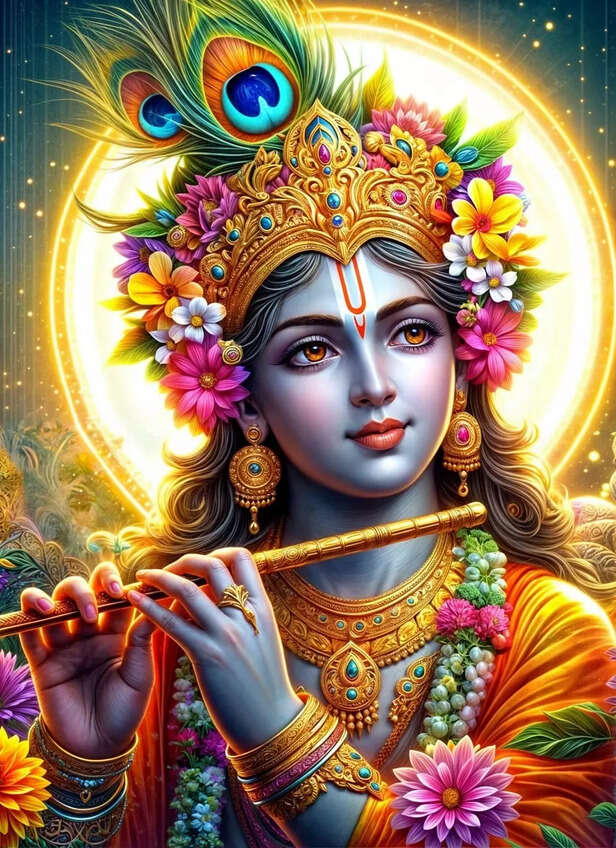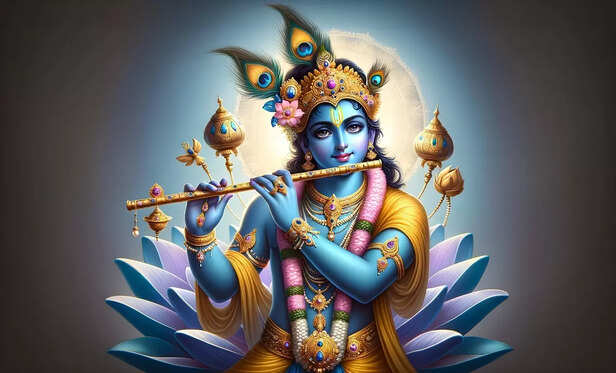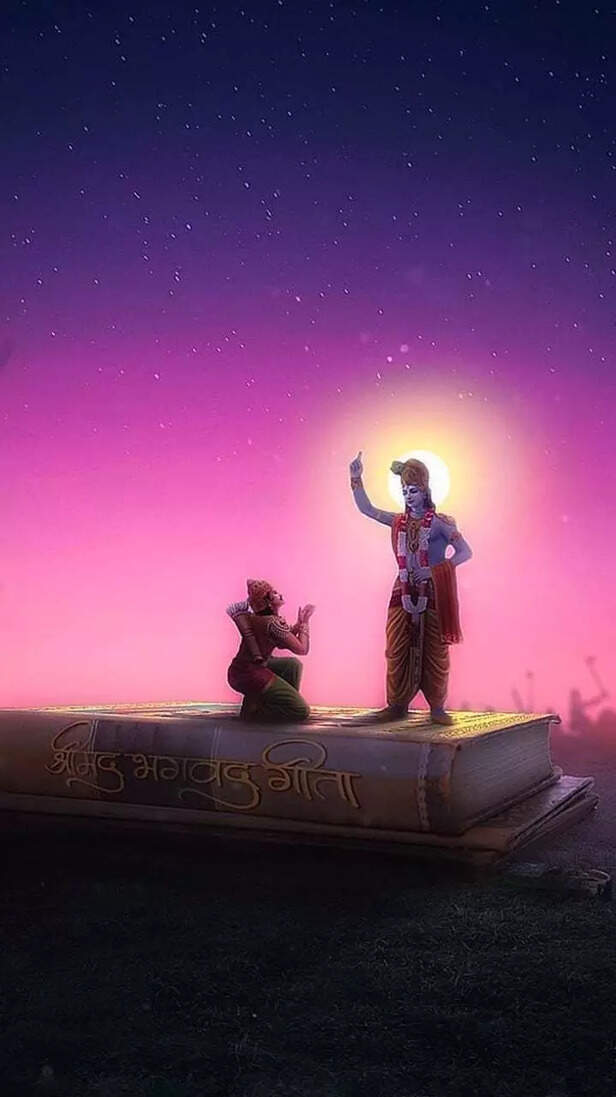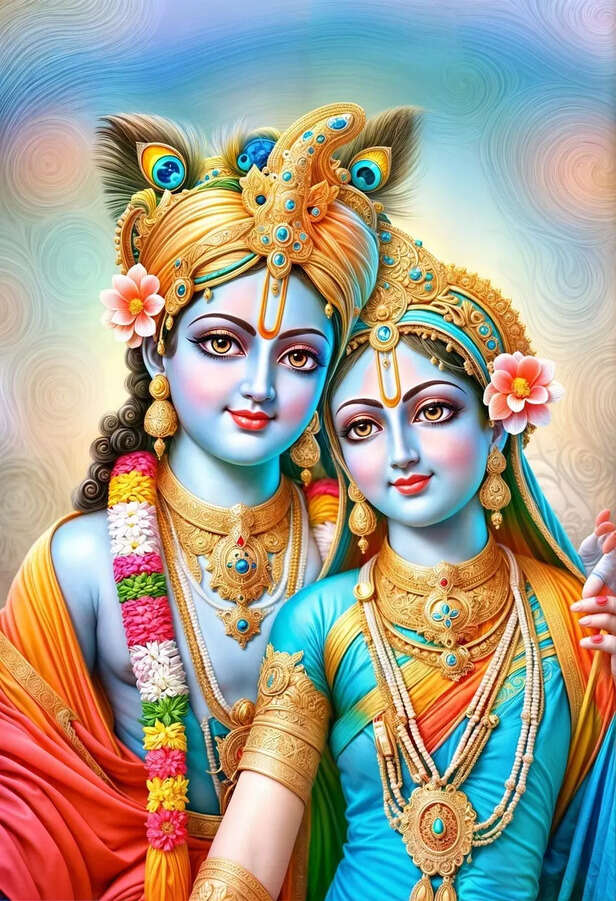Why Did Lord Vishnu Take The Avatar Of Lord Krishna?
Riya Kumari | Aug 16, 2025, 20:55 IST
( Image credit : Times Life Bureau )
When we hear the name Krishna, something stirs within us, a melody on the flute, a smile that disarms fear, a presence that feels closer than breath itself. To some, He is the mischievous child who stole butter. To others, the friend who never abandoned Arjuna on the battlefield. To yet others, He is the eternal beloved, drawing every soul towards Him with irresistible love. But behind these leelas lies a question that has echoed through the ages: why did Vishnu, the Preserver of the cosmos, choose to descend in this form?
In Sanatana Dharma, time is not just a passing river. It is cyclical, flowing in ages (yugas), each carrying its own weight of light and darkness. When darkness grows heavy and dharma seems to vanish, the Divine does not remain distant. He descends. This is the essence of the avatara-tattva taught in the Bhagavad Gita (4.7–8): “Yada yada hi dharmasya glanir bhavati Bharata… Whenever righteousness declines and unrighteousness rises, I manifest Myself.” Every avatara carries a distinct purpose. Narasimha came in fury, Vamana came in humility, Rama came as the very embodiment of discipline and virtue. But why did Vishnu come as Krishna? What was so unique about this descent?
The Cry of the Earth

The Bhagavata Purana describes that before Krishna’s birth, Bhumi Devi, Mother Earth herself, approached the gods in the form of a cow, burdened by the cruelty and greed of kings. Injustice had filled the land, adharma had spread to every corner. Led by Brahma, the devas prayed to Vishnu, and He assured them: “I shall come. In the Yadava clan, through Devaki’s womb, I will descend.”
This is the first reason for Krishna’s birth: to lighten the Earth, to restore balance. But restoration alone was not enough. Humanity needed something more, not just protection, but transformation.
Why Not Rama Again?

Some ask: if Vishnu had already descended as Rama, the perfect king and ideal man, why was another avatara required? The answer lies in the needs of the time. Rama showed the majesty of dharma upheld with firmness. But Krishna’s time required something subtler. Adharma had become complex, often hiding behind masks of power, ritual, and even morality itself.
To counter this, Vishnu did not just need to enforce dharma; He needed to reveal its deepest essence. Thus, Krishna did not only act as a restorer of order, He became a teacher of eternal truth.
Dharma Made Intimate

As Krishna, Vishnu came not as a distant lawgiver but as one who lived among the people. He played in the courtyards of Gokul, allowed Himself to be bound by Yashoda’s rope, danced with the gopis, and became the charioteer of Arjuna. He did not only sit upon a throne of heaven; He walked barefoot in Vrindavan’s dust.
This was not ordinary play. The Bhagavata Purana calls these actions lila, divine play. They are not just stories for delight; they are doorways into the highest wisdom. When He lifted Govardhan Hill, He was teaching that devotion and nature stand above empty ritual. When He subdued Kaliya, He showed that even venom can be purified by surrender. When He stole butter, He was showing that God does not want our offerings alone, He wants our hearts, unguarded and childlike.
The Voice of the Gita

But perhaps the greatest reason for Vishnu’s descent as Krishna was the battlefield of Kurukshetra. Humanity stood at a crossroad. A war that was unavoidable also carried the weight of despair, confusion, and moral doubt. Arjuna, the mighty warrior, collapsed in weakness, unable to act. And it was here that Krishna spoke the Bhagavad Gita, not as a distant deity, but as a friend, a guide who sat beside a trembling soul and lit the lamp of wisdom.
In that moment, Krishna did what no other avatara had done so completely: He revealed the eternal path of yoga, bhakti, and surrender. He showed that true dharma is not rigid rule-following, but aligning oneself with the eternal will of the Divine.
The Compassion of the Purna-Avatara

The Vishnu Purana and Bhagavata describe Krishna as the Purna-avatara, the complete descent. Unlike other avataras that revealed a particular aspect of God, Krishna revealed all. As a child, He was innocence itself. As a friend, He was loyalty itself. As a lover, He was the very embodiment of divine longing. As a teacher, He was wisdom itself.
Why Vishnu reincarnated as Krishna is not just answered by history or scripture, it is answered by the heart. Humanity needed to know that the Divine is not only the Preserver of worlds, but also the Companion of souls. Not only a king in heaven, but a cowherd who smiles, a charioteer who guides, a beloved who never abandons.
A Living Presence
Krishna’s avatara reminds us that God is not only to be worshipped in temples or feared in thunder. He can sit at our dining table, walk beside us in difficulty, and whisper truth into our confusion. His birth in a prison shows that even the darkest places can hold the light of divinity. His leelas remind us that joy is as sacred as discipline. His Gita teaches us that no battlefield of life is too small for God to enter.
This is why Vishnu became Krishna: to draw heaven close to earth, and to teach that liberation is not an escape from life, but a deeper embrace of it. And so, Krishna is not just an avatara of the past. His presence lingers in every act of faith, in every cry for help, in every search for truth. To ask why Vishnu became Krishna is to discover that the Divine is willing to become whatever we need Him to be, a protector, a teacher, a friend, a beloved.
The Cry of the Earth

Vishnu
( Image credit : Pexels )
The Bhagavata Purana describes that before Krishna’s birth, Bhumi Devi, Mother Earth herself, approached the gods in the form of a cow, burdened by the cruelty and greed of kings. Injustice had filled the land, adharma had spread to every corner. Led by Brahma, the devas prayed to Vishnu, and He assured them: “I shall come. In the Yadava clan, through Devaki’s womb, I will descend.”
This is the first reason for Krishna’s birth: to lighten the Earth, to restore balance. But restoration alone was not enough. Humanity needed something more, not just protection, but transformation.
Why Not Rama Again?

Krishna
( Image credit : Pixabay )
Some ask: if Vishnu had already descended as Rama, the perfect king and ideal man, why was another avatara required? The answer lies in the needs of the time. Rama showed the majesty of dharma upheld with firmness. But Krishna’s time required something subtler. Adharma had become complex, often hiding behind masks of power, ritual, and even morality itself.
To counter this, Vishnu did not just need to enforce dharma; He needed to reveal its deepest essence. Thus, Krishna did not only act as a restorer of order, He became a teacher of eternal truth.
Dharma Made Intimate

Krishna
( Image credit : Pixabay )
As Krishna, Vishnu came not as a distant lawgiver but as one who lived among the people. He played in the courtyards of Gokul, allowed Himself to be bound by Yashoda’s rope, danced with the gopis, and became the charioteer of Arjuna. He did not only sit upon a throne of heaven; He walked barefoot in Vrindavan’s dust.
This was not ordinary play. The Bhagavata Purana calls these actions lila, divine play. They are not just stories for delight; they are doorways into the highest wisdom. When He lifted Govardhan Hill, He was teaching that devotion and nature stand above empty ritual. When He subdued Kaliya, He showed that even venom can be purified by surrender. When He stole butter, He was showing that God does not want our offerings alone, He wants our hearts, unguarded and childlike.
The Voice of the Gita

Gita
( Image credit : Pixabay )
But perhaps the greatest reason for Vishnu’s descent as Krishna was the battlefield of Kurukshetra. Humanity stood at a crossroad. A war that was unavoidable also carried the weight of despair, confusion, and moral doubt. Arjuna, the mighty warrior, collapsed in weakness, unable to act. And it was here that Krishna spoke the Bhagavad Gita, not as a distant deity, but as a friend, a guide who sat beside a trembling soul and lit the lamp of wisdom.
In that moment, Krishna did what no other avatara had done so completely: He revealed the eternal path of yoga, bhakti, and surrender. He showed that true dharma is not rigid rule-following, but aligning oneself with the eternal will of the Divine.
The Compassion of the Purna-Avatara

Radha krishna
( Image credit : Pixabay )
The Vishnu Purana and Bhagavata describe Krishna as the Purna-avatara, the complete descent. Unlike other avataras that revealed a particular aspect of God, Krishna revealed all. As a child, He was innocence itself. As a friend, He was loyalty itself. As a lover, He was the very embodiment of divine longing. As a teacher, He was wisdom itself.
Why Vishnu reincarnated as Krishna is not just answered by history or scripture, it is answered by the heart. Humanity needed to know that the Divine is not only the Preserver of worlds, but also the Companion of souls. Not only a king in heaven, but a cowherd who smiles, a charioteer who guides, a beloved who never abandons.
A Living Presence
This is why Vishnu became Krishna: to draw heaven close to earth, and to teach that liberation is not an escape from life, but a deeper embrace of it. And so, Krishna is not just an avatara of the past. His presence lingers in every act of faith, in every cry for help, in every search for truth. To ask why Vishnu became Krishna is to discover that the Divine is willing to become whatever we need Him to be, a protector, a teacher, a friend, a beloved.
